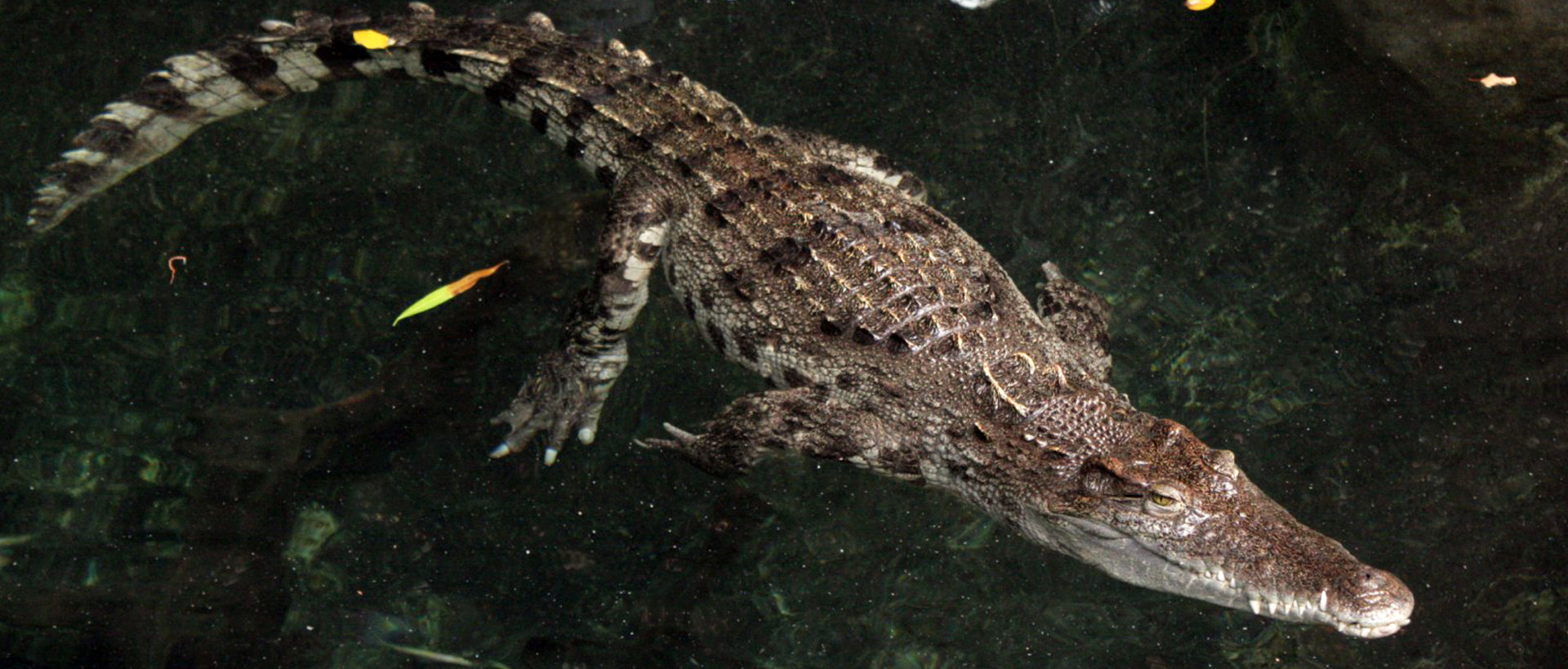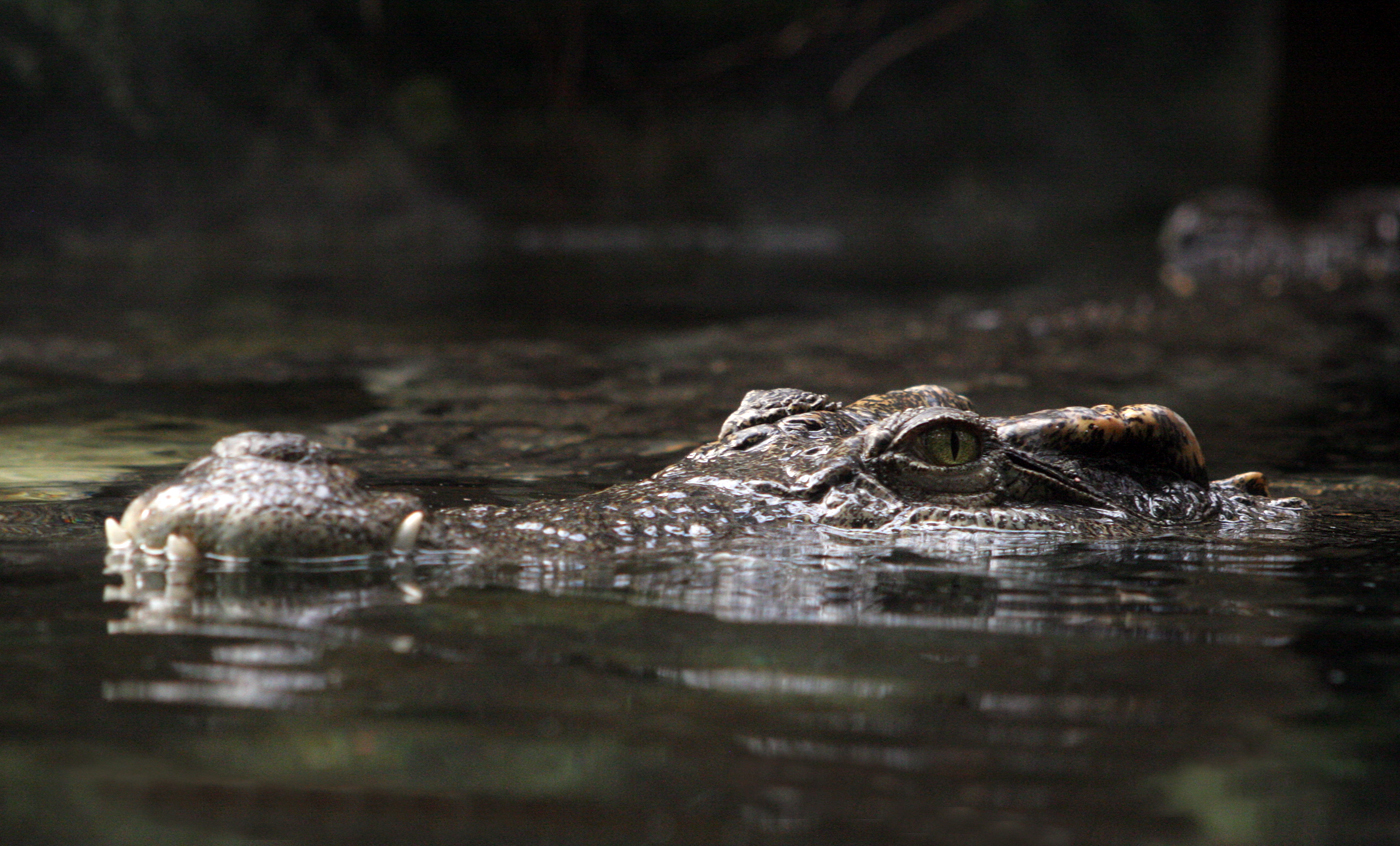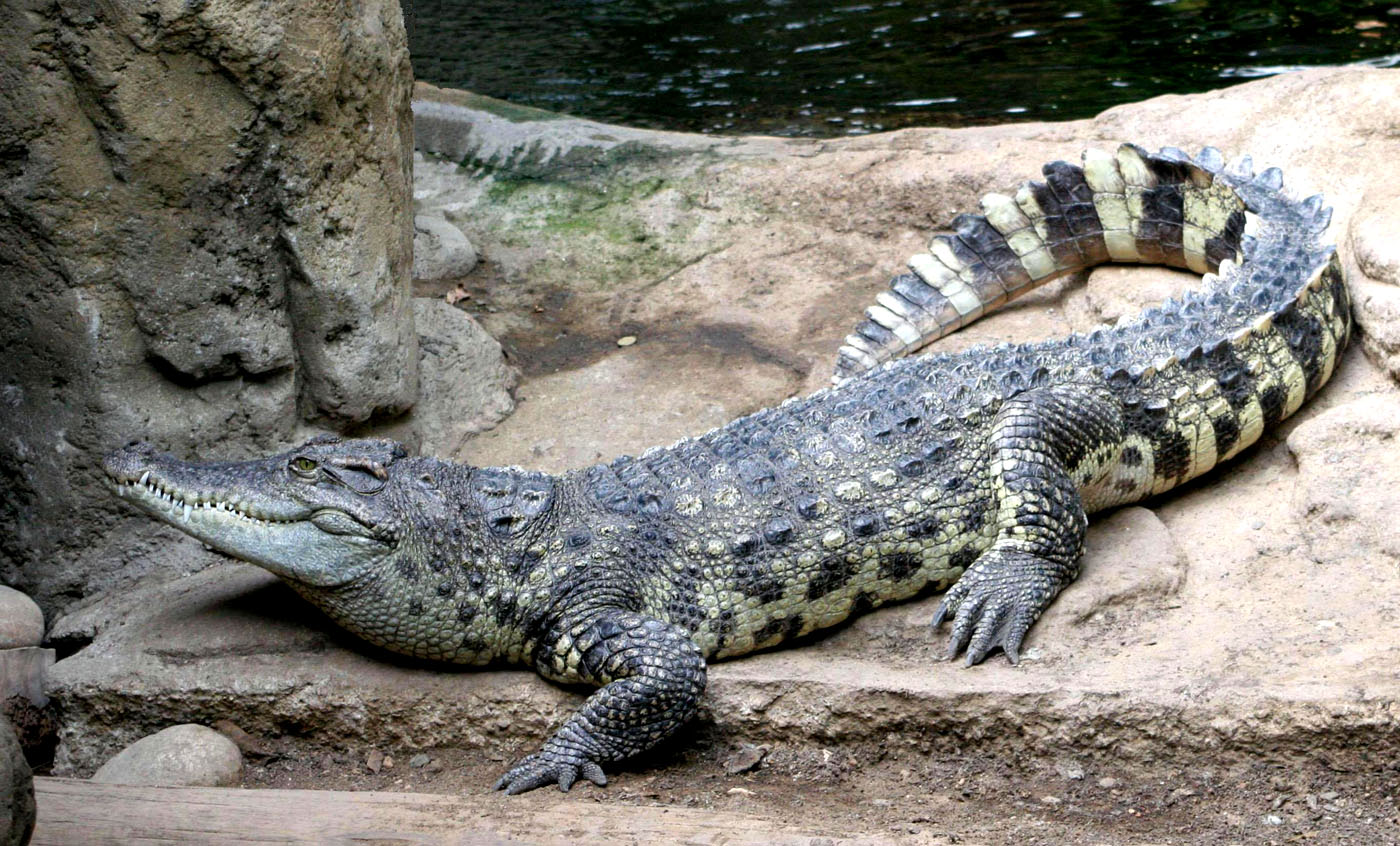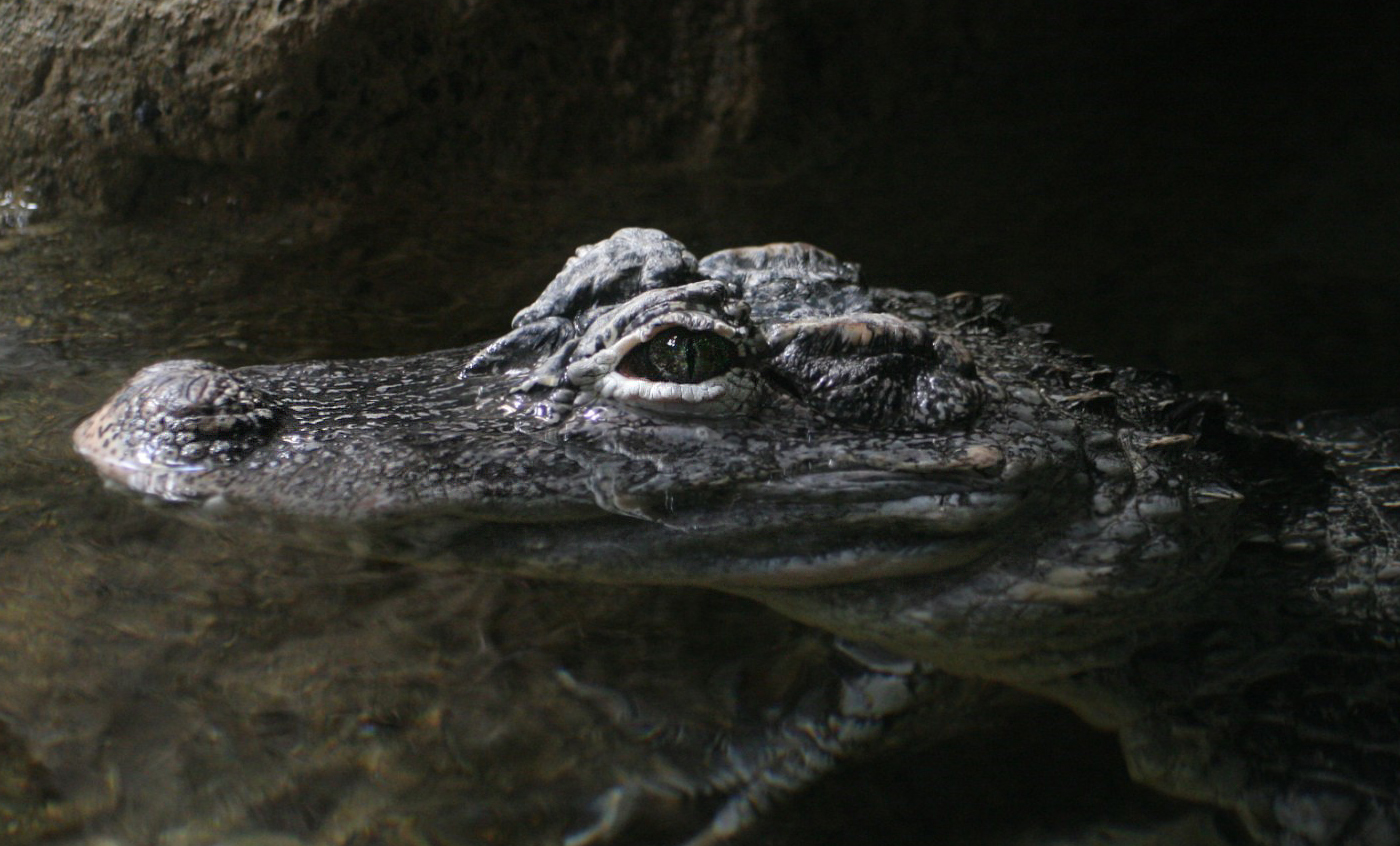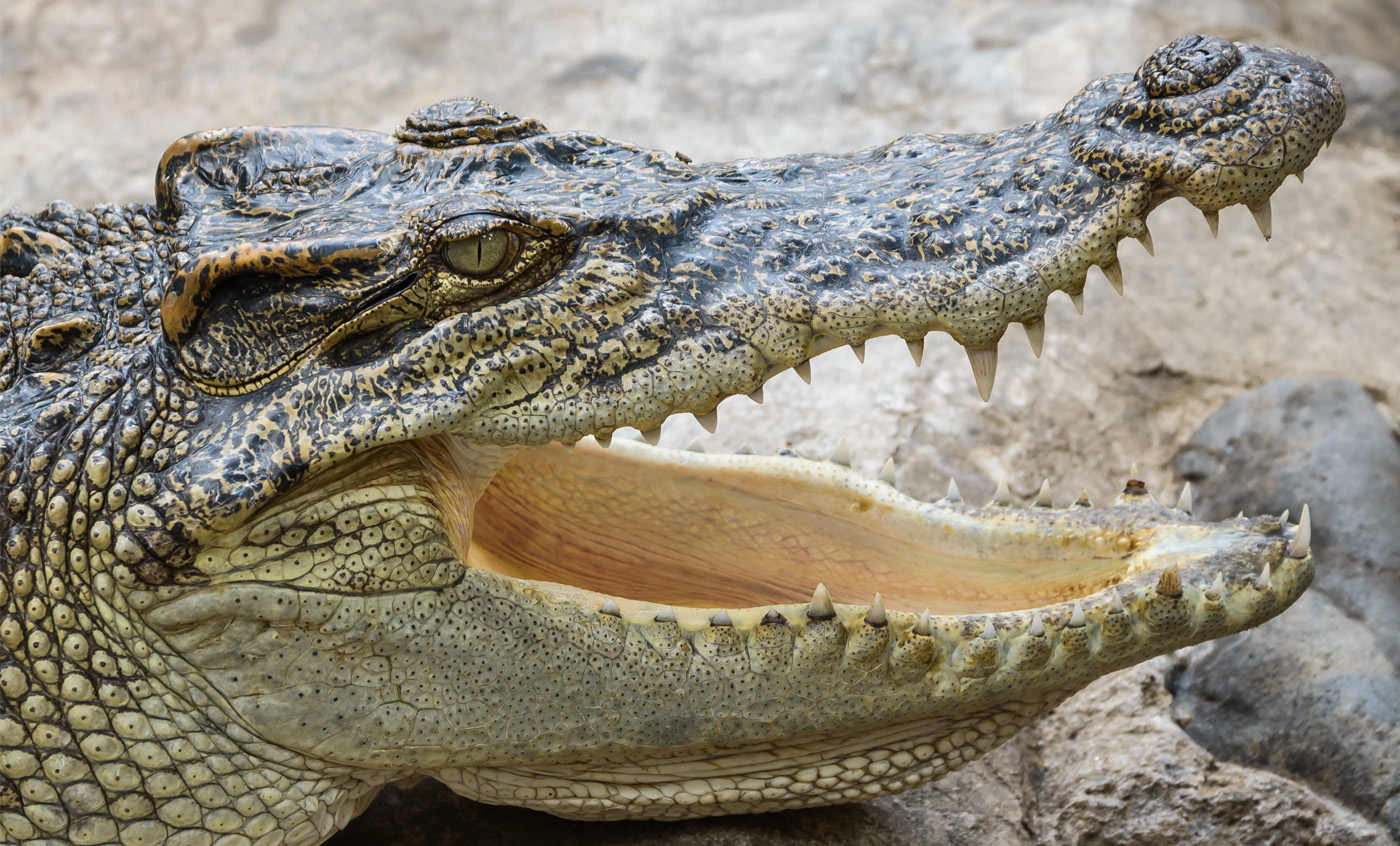Siamese crocodile
This crocodile lives in lowland topical fresh water environments in south-east Asia and Indonesia.
It is medium-sized, although males can reach up to 4 metres long, and is not generally considered dangerous for humans. It is one of the most endangered crocodiles in the wild, although it is quite populated in captivity, as it is bred to obtain its valuable hide.
Natural habit
Tailandia, Laos, Camboya, Vietnam, Malasia y algunas islas de Indonesia como Java y Borneo.
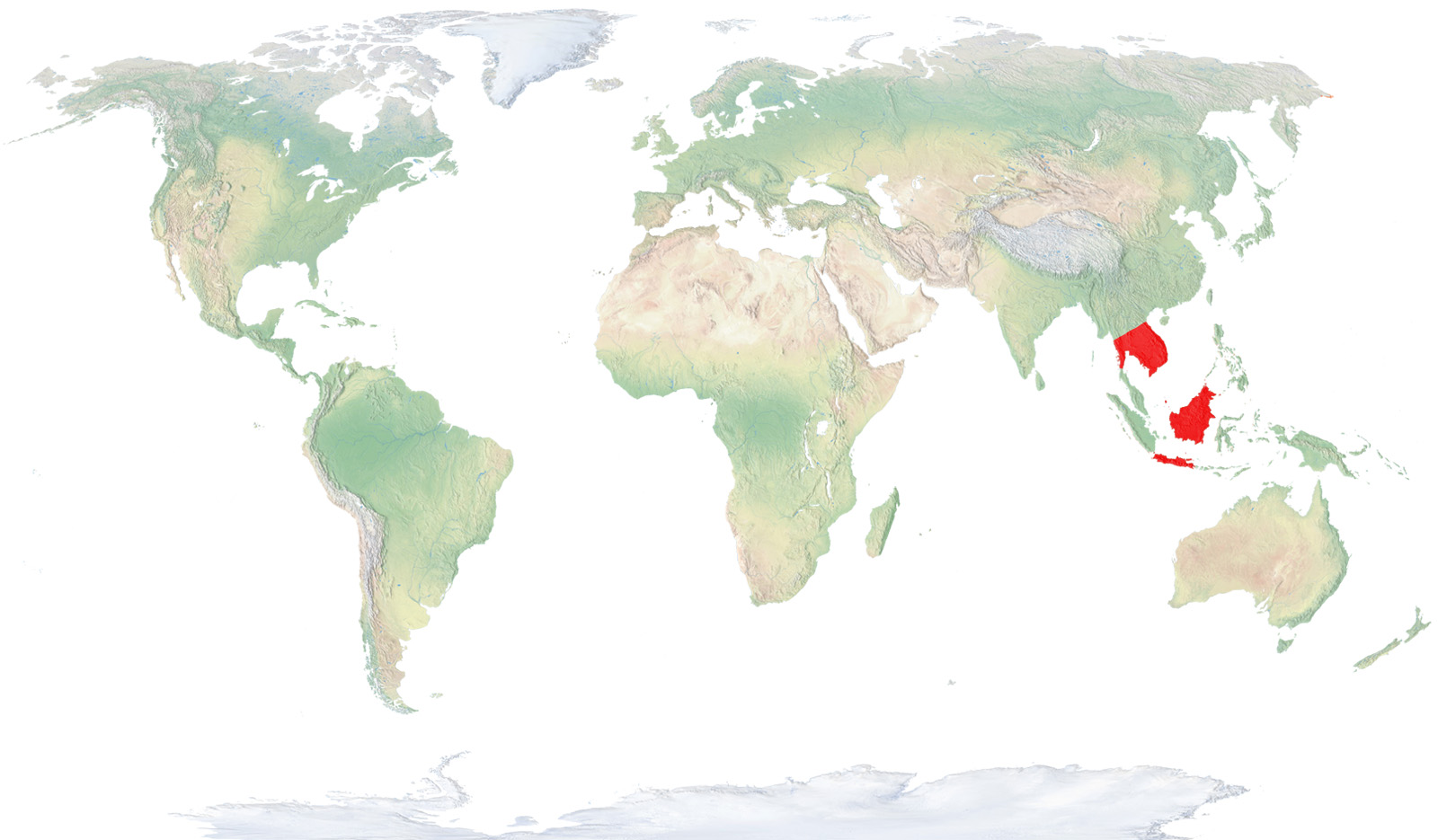
- Distribution / Resident
- Breeding
- Wintering
- Subspecies
Risk level
- Extint
- Extint in the wild
- Critically endangered
- In Danger
- Vulnerable
- Near threatened
- Minor concern
- Insufficient data
- Not evaluated
Taxonomy
Physical characteristics
Biology
Reproduction
Biology
The Siamese crocodile is not a large animal, as its size usually does not exceed 3 metres long, 4 at most. It has a large head in comparison to its body, and protruding eyes and nostrils, as proof of its aquatic lifestyle. Its limbs are similar to other crocodiles’, with five fingers on the front legs and four on the rear ones, albeit longer.
Its body has stripes alternating its colour between olive and brown. Young crocodiles have a golden or brownish hue, with black stripes and spots all over their body.
Lakes, streams, slow current rivers, swamps and fresh water lowland marshlands.
It mainly feeds on fish, but it can also capture reptiles, amphibians, birds and small mammals. It also eats carrion. Young crocodiles feed on arthropods, insects, crabs and amphibians. As in all crocodiles, they are unable to chew, so they have to shake the prey in order to tear it to pieces with their teeth.
The reproductive season takes places during the rainy period. Females build a kind of nest, several meters from the water, where they lay fifteen to fifty eggs. The nest is shaped like a mound, consisting of a mixture of soil, leaves and other plant material, reaching 150 cm of diameter and 30 cm tall. Females visit their nests regularly until the eggs hatch, and then they carry the babies to the water, on its mouth.
It is medium-sized, although males can reach up to 4 metres long, and is not generally considered dangerous for humans. Its habits are generally sedentary and during the rainy season, it scatters across several flooded areas of its habitat. This species has been spotted up to 600 m high.
It is one of the most endangered crocodiles in the wild, although it is quite populated in captivity, as it is bred to obtain its valuable hide. From animals in captivity, some introductions have been carried out in its native environment, where it had become almost completely extinct. The main threats to this species are the conversion of its habitat into farming land and poaching for its hide. In some regions of its distribution area, the native population protect these crocodiles, for they consider them to be sacred animals.



